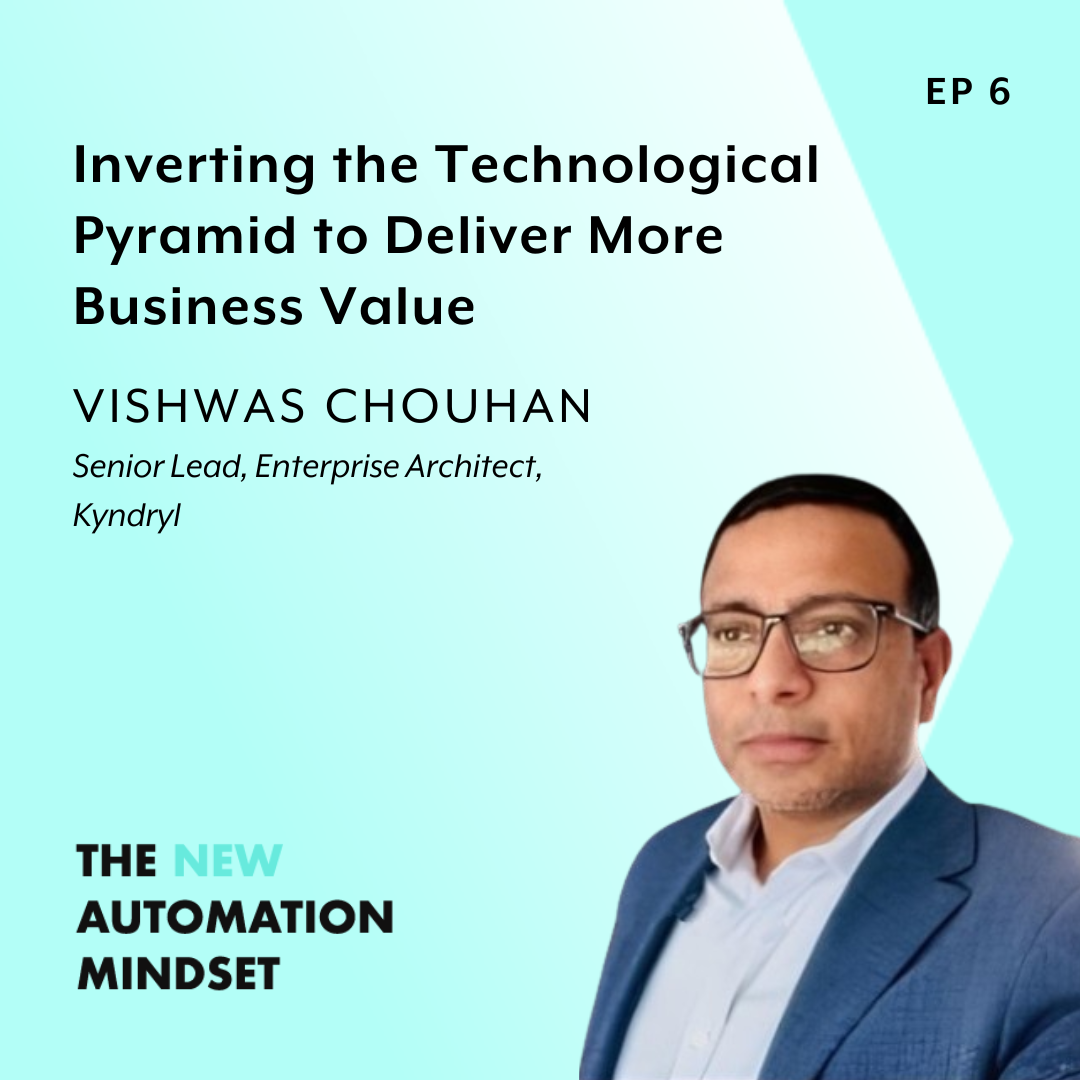
00:00
00:00
1x
- 0.5
- 1
- 1.25
- 1.5
- 1.75
- 2
Epic Scale Enterprise Transformation with Low Code
22
This is a podcast episode titled, Epic Scale Enterprise Transformation with Low Code. The summary for this episode is: <h3>Episode Summary</h3><p><br></p><p>In today’s episode, Markus sits down with Vishwas Chouhan, Enterprise Architect at Kyndryl, the world’s largest provider of IT infrastructure services. Vishwas unravels key insights for businesses undertaking digital transformations, emphasizing the necessity of a 'growth mindset', encouraging out-of-the-box thinking and a proactive attitude towards change. A critical part of this change, he advises, involves simplifying technology footprints and streamlining processes. You’ll hear as he underscores the power of utilizing low-code platforms such as Workato to create more value and agility while closing the gap between technology and business. Lastly, he emphasizes clear governance to maintain balance, especially when scaling digital transformations.</p><p><br></p><h3>Timestamps</h3><p><br></p><p>*(00:00) Intro</p><p><br></p><p>*(02:34) Background on Vishwas and Kyndryl</p><p><br></p><p>*(08:11) What to look for when rebuilding legacy architecture from scratch</p><p><br></p><p>*(10:54) Leveraging automation to enable your teams to focus on what matters</p><p><br></p><p>*(14:20) Flipping the tech pyramid to bring more value to your business</p><p><br></p><p>*(18:26) How to get buy-in from your entire team</p><p><br></p><p>*(22:10) Why siloes need to be broken down between departments</p><p><br></p><p>*(24:46) Delivering marketing at the speed of business</p><p><br></p><p>*(31:07) Changing the mindsets of developers</p><p><br></p><p>*(37:45) The future combination of business and engineering</p><p><br></p><p>*(41:07) Democratizing access to automation while still maintaining governance</p><p><br></p><p>*(42:50) Today's Takeaway</p><p><br></p><h3>Episode Key Takeaways</h3><p><br></p><ul><li><strong>Invert the Technological Pyramid: </strong>By flipping the traditional pyramid of infrastructure and reducing your tech footprint, Vishwas explains how you can catalyze business transformation and increase the value output.</li></ul><p><br></p><ul><li><strong>Bring down the walls that silo your teams: </strong>Fostering a collaborative mindset focusing on end-to-end processes facilitates better alignment across departments, technology, and business. </li></ul><p><br></p><ul><li><strong>Low code is a shared language across teams regardless of skill:</strong> No-code / low-code platforms enable more stakeholders to work together and democratize development. They foster better communication, and make non-technical folks into engineers, and engineers into business people. </li></ul><p><br></p><ul><li><strong>Evolve governance as you evolve technology: </strong>A proper governance framework is critical in scaling operations while maintaining stability and preventing chaos. Vishwas highlights that your governance does not need to be set in stone and should change alongside your business and technology needs.</li></ul><p><br></p><h3>Top quotes</h3><p><br></p><p>“When I came across Workato, it straight away out of the box fit the bill for me. When I saw that the platform was ready when it came to compliance, security, and was able to provide us observability end to end…that was what I was looking for.”</p><p><br></p><p>“Technology does not drive by itself. We're not there yet. We can talk about how AI is enabling that for us in the future. But for now, we still have technology and people together as partners. And when you're trying to drive that, you need to look at what the teams are trying to do and does it really help marketeers? As mentioned in the book, you need to always reimagine how can this be done better? So the low code, no code platform becomes a common language for both business and technology to speak because there used to be this constant shake between business and developers.”</p><p><br></p><p>“When I see a platform like low code, no code, it removes that friction, you can speak the same language. So you’re converting your developers to business and you're converting your business to engineers. And when you can get that aligned, there's no stopping it.”</p><p><br></p><p>“So my process was evolving and my technology footprint was really broad. And when I started to layer this requirement and start to break this up around people, process and technology…I said that, technology is what needs to give for me, because that will help me reduce the cost. It will also help me simplify. What would it look like if I flip this pyramid where my technology footprint is balanced with proper governance around it? And then you layer all your integrations and automations and you bring value which is right now, at the top, and you're flipping that and you're expanding and you're giving more value to the business.”</p>